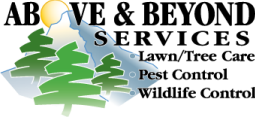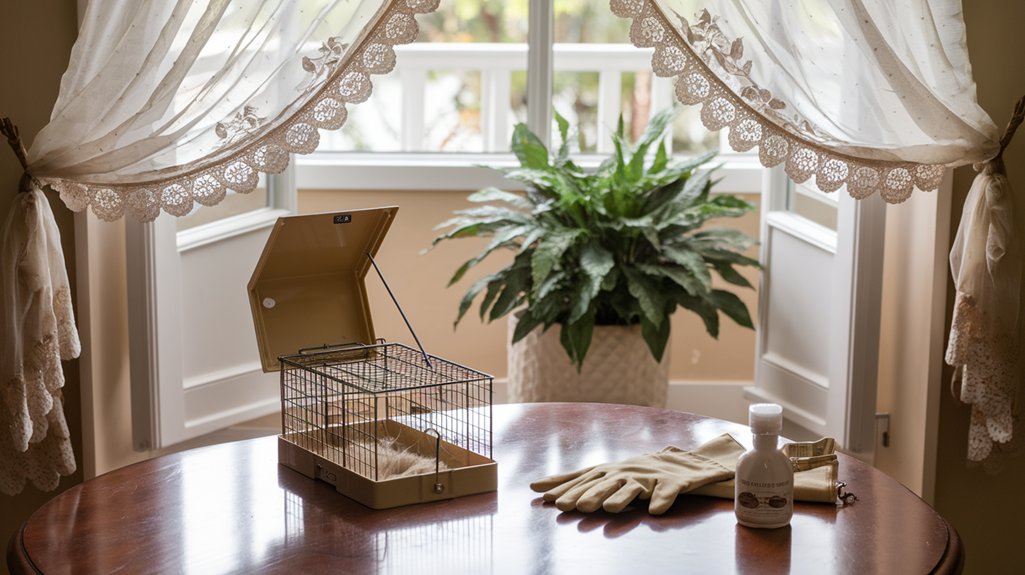If you’ve discovered unwelcome wildlife in your home, it’s important to act swiftly and humanely. Identifying the intruder is your first step, as different animals require different approaches. Using traps can be effective, but you’ll want to ensure you’re doing it safely. What techniques work best, and when should you consider calling in the professionals? Let’s explore the best ways to handle this situation without causing harm to the animals or yourself.
Understanding Common Wildlife Intruders
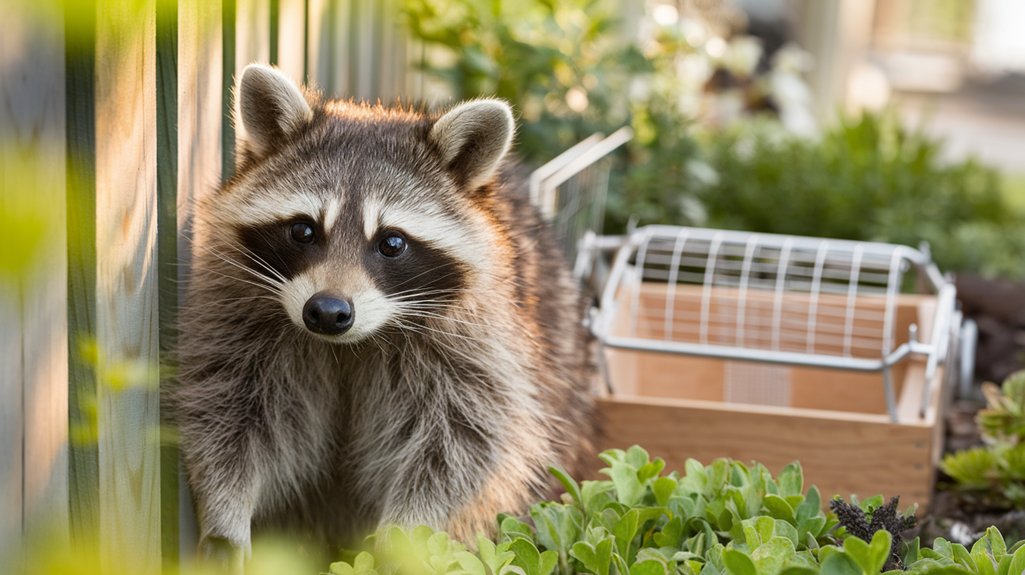
When you notice signs of wildlife intrusion, it’s crucial to identify the common offenders that might’ve made your home their temporary haven. Raccoons, squirrels, and bats often top the list of common intruders.
These critters are typically drawn to easy access points, like gaps in your roof or openings in the eaves. Understanding wildlife behavior helps you anticipate their next move; for instance, raccoons are nocturnal and tend to rummage through trash, while squirrels are adept at climbing and often invade attics.
Humane Wildlife Removal protects all. Learn wildlife tips from Colorado Parks and Wildlife.
Signs of Wildlife Infestation
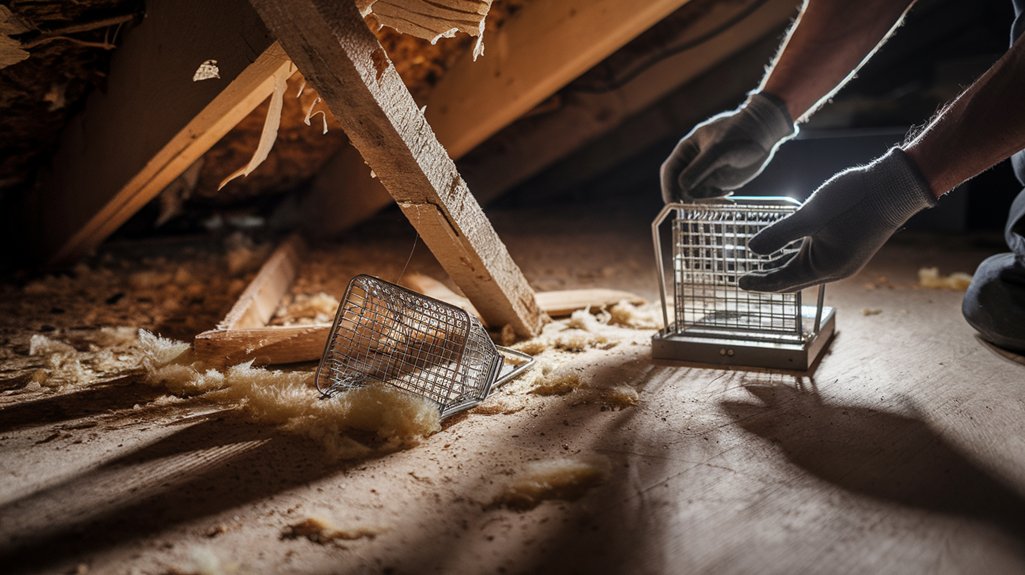
Recognizing the signs of wildlife infestation is key to addressing the problem quickly. Start by looking for droppings around your home. Feces identification can reveal the type of animal intruding, whether it’s raccoons, mice, or bats.
You should also listen for unusual noises, especially at night, as they may indicate movement within your walls or attic. Check for gnaw marks on wood or wires and signs of nests in hidden corners.
Additionally, inspect your home for potential entry points, such as cracks in the foundation, gaps around windows, or holes in the roof. Early detection can help you take swift action, preventing further damage and ensuring a safe living environment.
Prevention Tips to Keep Wildlife Out
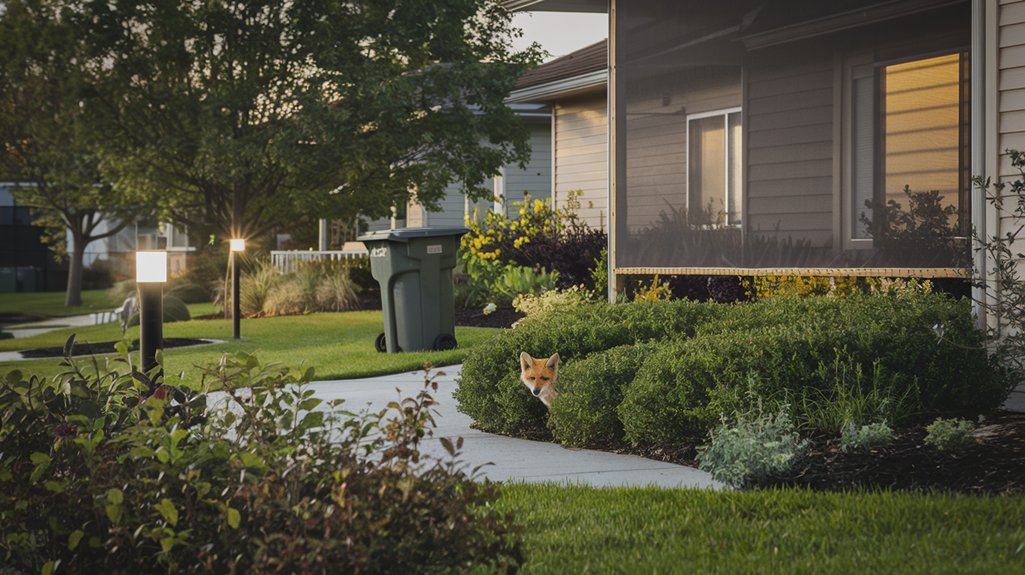
To keep wildlife out of your home, it’s essential to take proactive measures that deter them from entering in the first place.
Start by installing strong exterior barriers, like screens on vents and sturdy covers for chimneys. Check for gaps around windows and doors, and seal any openings to prevent critters from sneaking in.
Proper food storage is crucial; keep all food items in airtight containers and avoid leaving pet food outside. Secure your garbage cans with tight-fitting lids to minimize attraction.
Finally, maintain your yard by trimming overgrown bushes and removing debris, which can provide shelter for wildlife.
Safe and Humane Removal Techniques
If you discover wildlife in your home, it’s crucial to act quickly and humanely to remove them. Start by selecting appropriate trap types, such as live traps or one-way door traps, which allow animals to exit but not re-enter. Next, choose effective bait options; this could be fruits, seeds, or peanut butter, depending on the species.
Here’s a table to help you decide:
| Trap Type | Best Bait Options | Target Species |
|---|---|---|
| Live Trap | Peanut Butter | Raccoons, Squirrels |
| One-Way Door Trap | Sunflower Seeds | Rats, Mice |
| Snap Trap | Bacon | Mice, Rats |
Always check traps frequently and release animals far from your home for their safety and yours.
When to Call a Professional
Wondering when it’s best to call a professional for wildlife removal? If you notice signs of urgency, like unusual noises in your walls or attic, don’t wait.
When to act is crucial; the longer you delay, the more damage or risk may arise. If you spot droppings or nesting materials, it’s a clear indicator that wildlife has taken up residence.
Additionally, if you’re dealing with a larger animal, like a raccoon or skunk, it’s safer to contact an expert. They’ve the tools and knowledge to handle these situations without endangering you or the animal.
Rehabilitating Wildlife After Removal
After safely removing wildlife from your home, it’s important to consider their rehabilitation. Many animals require specialized care to recover from the stress of removal and potential injuries.
Reach out to local rehabilitation centers that focus on wildlife care. These facilities have trained professionals who can assess the animal’s condition and provide necessary treatment. They often offer food, shelter, and medical attention until the animal is ready for release back into its natural habitat.
If you’re unsure where to find a rehabilitation center, check with local wildlife organizations or veterinarians.
Long-Term Solutions for a Wildlife-Free Home
To keep your home wildlife-free, it’s crucial to identify and address the factors that attract animals in the first place. Start with habitat modification by removing food sources, securing trash bins, and sealing entry points. Additionally, consider using natural deterrents like essential oils or planting specific herbs that repel pests.
Here’s a quick reference table for effective long-term solutions:
| Solution Type | Examples | Benefits |
|---|---|---|
| Habitat Modification | Seal cracks, remove debris | Reduces access |
| Natural Deterrents | Peppermint oil, citrus peels | Safe for pets and children |
| Landscaping Changes | Trim bushes, plant repellents | Deters animals naturally |
| Regular Maintenance | Inspect roof, clear gutters | Prevents nesting |
| Community Awareness | Educate neighbors | Collective prevention |
Frequently Asked Questions
What Should I Do if I Encounter a Wild Animal Inside My Home?
If you have a wildlife encounter in your home, stay calm and don’t approach the animal. Secure pets and children, then contact a professional for safe removal, ensuring both your safety and the animal’s well-being.
Are There Specific Seasons When Wildlife Is More Likely to Invade Homes?
Yes, wildlife tends to invade homes more during spring migration when they’re seeking food and nesting sites. In winter, however, many animals hibernate, reducing their presence. Stay vigilant as seasons change to prevent unwanted visitors.
Can Pets Attract Wildlife to My Property?
Yes, pets can attract wildlife to your property. Leaving food outside or allowing pets to roam freely creates wildlife attractants. For pet safety, ensure you clean up food spills and supervise outdoor time.
How Can I Tell if Wildlife Is Nesting in My Attic?
You can tell if wildlife is nesting in your attic by looking for nesting signs like droppings, chewed materials, or noises at night. Conduct a thorough attic inspection to identify any potential wildlife activity.
Are There Legal Restrictions on Removing Certain Wildlife From My Property?
Yes, there are wildlife regulations that vary by location. Before using humane traps, check local laws to ensure you’re compliant. It’s crucial to understand which species require special handling or protection while removing them.
By following these expert tips and humane solutions, you can effectively address wildlife intrusions in your home. Identifying signs, employing safe removal techniques, and implementing prevention strategies will help you maintain a wildlife-free environment. Remember, if the situation feels overwhelming, don’t hesitate to call a professional. With the right approach, you can ensure both your safety and the well-being of the animals. Act now to protect your home and create a harmonious living space for everyone.
Contact Us
Humane Wildlife Removal with Above & Beyond Services ensures a wildlife-free Denver home. Call (720) 806-6378 or visit Above & Beyond Services for free quotes on wildlife control, pest management, and more.
Key Takeaways
- Identify the species by looking for droppings, gnaw marks, and nesting materials to tailor removal methods effectively.
- Use live traps or one-way door traps for humane removal, ensuring to check them frequently for the animal’s safety.
- Seal all entry points, such as gaps and cracks, to prevent further access after successful removal of the wildlife.
- Store food securely in airtight containers and maintain a clean yard to deter wildlife from returning.
- Contact a professional if you encounter larger animals or persistent infestations, as they have the expertise and tools for safe removal.
